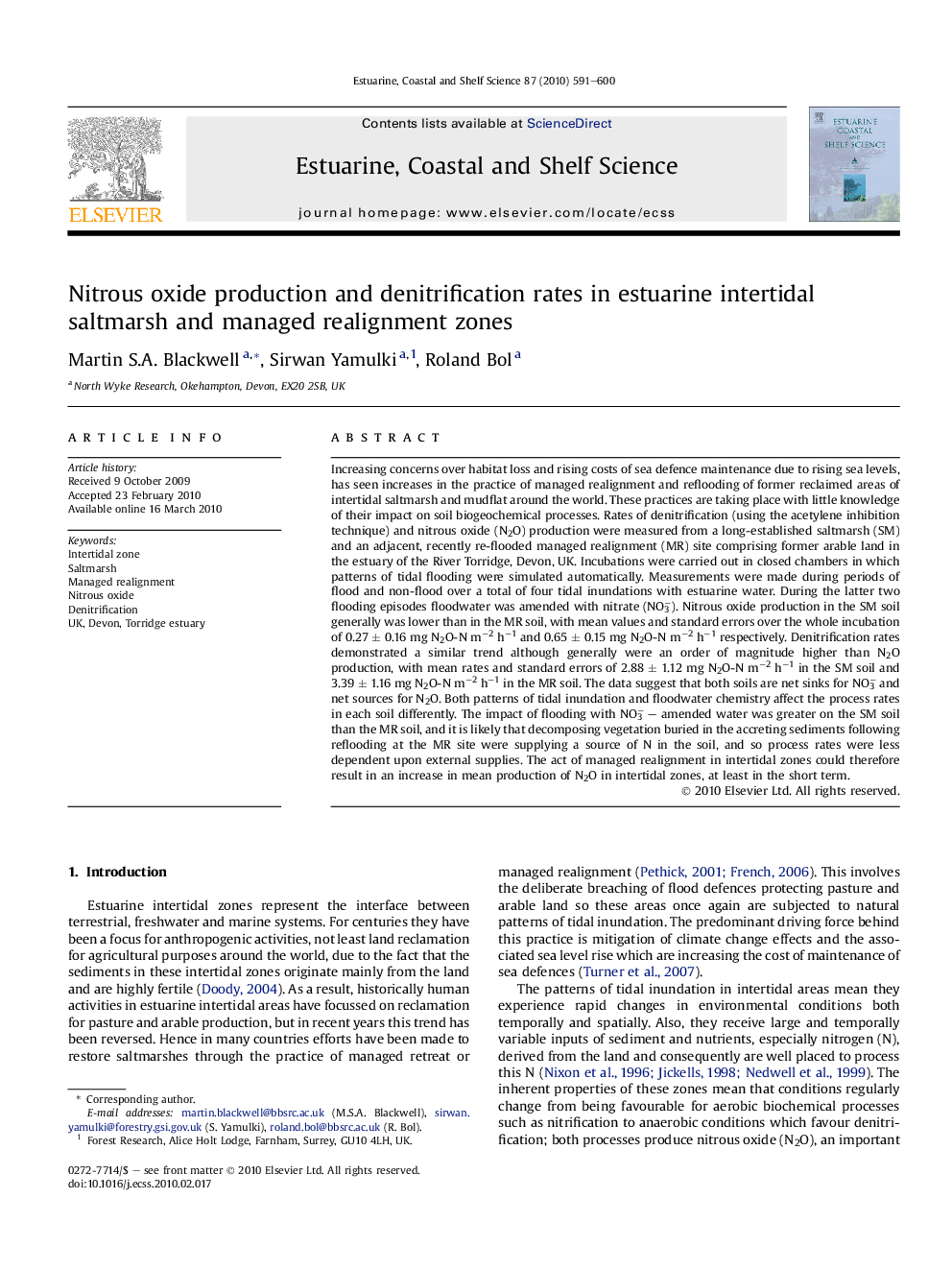| کد مقاله | کد نشریه | سال انتشار | مقاله انگلیسی | نسخه تمام متن |
|---|---|---|---|---|
| 4541074 | 1326706 | 2010 | 10 صفحه PDF | دانلود رایگان |

Increasing concerns over habitat loss and rising costs of sea defence maintenance due to rising sea levels, has seen increases in the practice of managed realignment and reflooding of former reclaimed areas of intertidal saltmarsh and mudflat around the world. These practices are taking place with little knowledge of their impact on soil biogeochemical processes. Rates of denitrification (using the acetylene inhibition technique) and nitrous oxide (N2O) production were measured from a long-established saltmarsh (SM) and an adjacent, recently re-flooded managed realignment (MR) site comprising former arable land in the estuary of the River Torridge, Devon, UK. Incubations were carried out in closed chambers in which patterns of tidal flooding were simulated automatically. Measurements were made during periods of flood and non-flood over a total of four tidal inundations with estuarine water. During the latter two flooding episodes floodwater was amended with nitrate (NO3−). Nitrous oxide production in the SM soil generally was lower than in the MR soil, with mean values and standard errors over the whole incubation of 0.27 ± 0.16 mg N2O-N m−2 h−1 and 0.65 ± 0.15 mg N2O-N m−2 h−1 respectively. Denitrification rates demonstrated a similar trend although generally were an order of magnitude higher than N2O production, with mean rates and standard errors of 2.88 ± 1.12 mg N2O-N m−2 h−1 in the SM soil and 3.39 ± 1.16 mg N2O-N m−2 h−1 in the MR soil. The data suggest that both soils are net sinks for NO3− and net sources for N2O. Both patterns of tidal inundation and floodwater chemistry affect the process rates in each soil differently. The impact of flooding with NO3− – amended water was greater on the SM soil than the MR soil, and it is likely that decomposing vegetation buried in the accreting sediments following reflooding at the MR site were supplying a source of N in the soil, and so process rates were less dependent upon external supplies. The act of managed realignment in intertidal zones could therefore result in an increase in mean production of N2O in intertidal zones, at least in the short term.
Journal: Estuarine, Coastal and Shelf Science - Volume 87, Issue 4, 20 May 2010, Pages 591–600